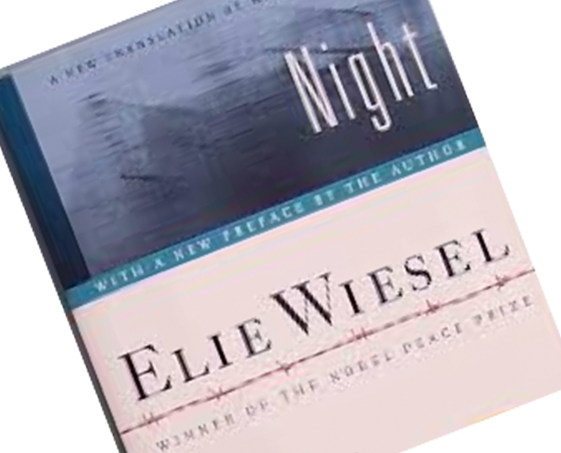IWitness debuts timeline activities for high school students with lesson about Elie Wiesel's 'Night'

Elie Wiesel’s landmark book “Night” is the subject of a new type of English-language IWitness activity produced by USC Shoah Foundation’s education department.
In “Journey Through Night,” the Institute encourages students to engage with space and history by integrating maps, text and testimony into interactive timelines. The activity – the first “GeoStory Activity” in IWitness – focuses on Wiesel’s experiences during the Holocaust, as well as those of others who were forcibly moved from Sighet – Wiesel’s hometown in Romania – to the Auschwitz death camp in Poland.
“We’ve been wanting to do a ‘Night’-oriented activity for some time,” said IWitness Manager Greg Irwin. “It’s something so many educators use, and we wanted to have a powerful tool to accompany reading.”
Because Wiesel never gave video testimony for the Institute’s Visual History Archive, the team previously hesitated to create an activity centered solely on his story. But with this new activity type, Wiesel’s texts are interwoven with the audio-visual interviews of other survivors whose stories parallel his.
“We want students to get a sense of plurality,” Irwin said. “Elie Wiesel telling his story was a powerful act, and we want students to gain a sense of how other people tell stories and why they tell stories.”
By collecting clips of testimony to construct a “GeoStory” – a map and timeline with videos – students can discover how changes in time and place shape history. They will also gain a new appreciation of places they’ve never been to and understand the scope of the history they are studying.
“The idea stemmed from meetings with a lot of educators,” Irwin said. “We learned that they valued timelines and maps and wanted students to see breadth in time and place. This was our attempt at serving that need.”
In the testimonies students will be exposed to, the survivors describe their journeys from and to prewar Sighet and a ghetto in Sighet; and their deportations to concentration camps, liberation locations and immigration locations. Students will use several testimonies in their timelines, analyzing and interpreting survivors’ stories about Sighet, Romania, Auschwitz-Birkenau, the Buchenwald concentration camp, and the United States.
“Journey Through Night” is the first activity USC Shoah Foundation has just released that aligns to Common Core Standards, ISTE Standards and National Geography Standards.
Soon to come is a second activity called “Politics and Place,” which features Armenian Genocide testimonies to help students understand how politics can shape human geography. As students progress through the activity, they will be asked to consider the impact of the Ottoman Empire’s governmental policies of deportation and mass starvation against the Armenian people, who they forcefully removed from native homelands and displaced into the desert of Deir-Zor.
With this example in mind, students will apply their understanding of the relationship between people, politics and their geographical environment by constructing a GeoStory, having learned to draw evidence from primary sources to support their conclusions.